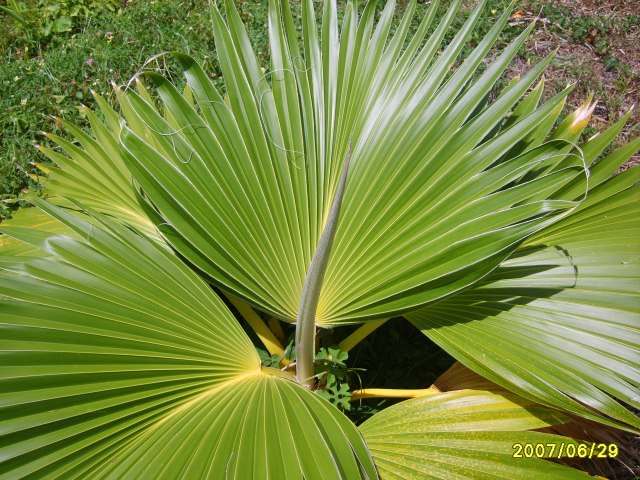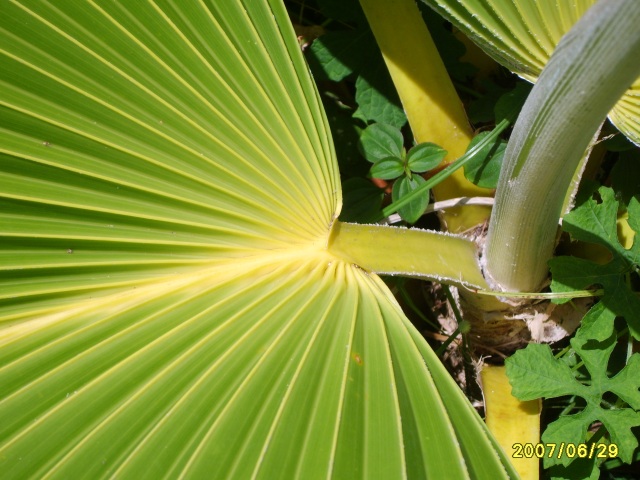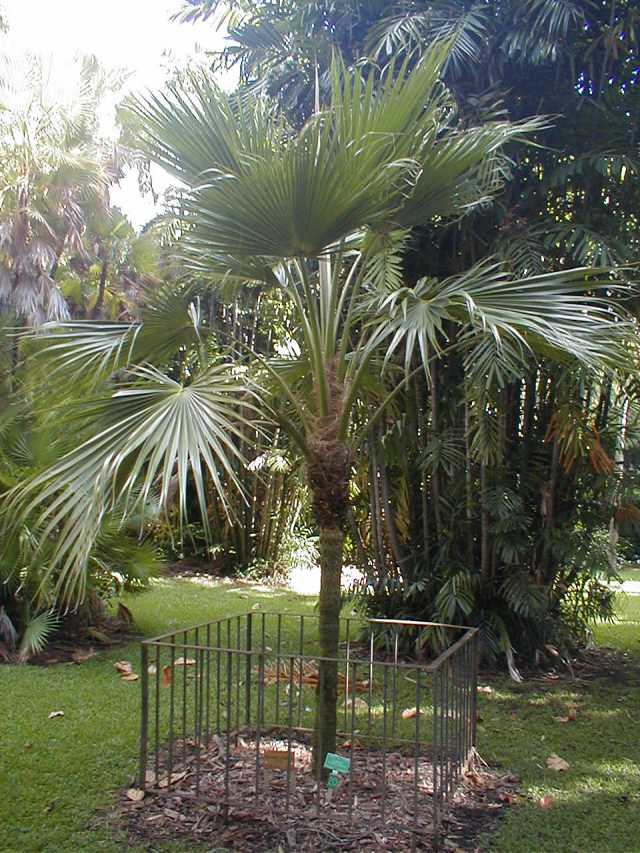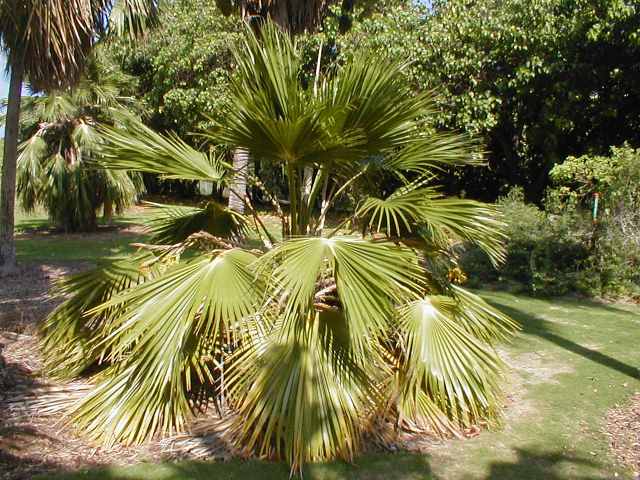Four species of loulu are endemic to Molokai: Pritchardia forbesiana, P. hillebrandii, P. lowreyana, and P. munroi. Two, P. forbesiana and P. munroi are also endemic to the west end of Maui and have been presented with the other loulu native to Maui.
Pritchardia hillebrandii or Loulu lelo (yellowish loulu), is endemic to the Island of Molokai where it grows along the northeastern coastline at elevations of 100 to 1900 feet. Today, the habitat is limited mainly to the tops of islets Huelo and Mokapa located off the north coast of Molokai.
P. hillebrandii is a medium sized palm with trunks that grow to 25 feet. The fan shaped leaves’ lower surfaces are ashy-silvery along the petioles and ridges of segment folds. They are waxy glaucous, sometimes to the point of appearing silvery as in the case of a specimen growing in the Ho’omaluhia Botanical Garden on Oahu. The fruit are small yellowish or reddish brown globose shaped becoming intensely bluish or nearly black when ripe. They are 3/4 inch in diameter, sometimes a little larger but less than 1 inch.
The petiole and hastula details seen on this young specimen may not reflect the character seen on mature trees. However, a noticeable trait that catches the attention here is the clean symmetry of the converging segment ridges as they come together at the hastula. The hastula itself shows no prominent lip.
Pritchardia lowreyana is endemic to the Island of Molokai, and in 2007 considered to be the appropriate name for what was formerly called Pritchardia macrocarpa on Oahu. Its natural habitat on Molokai is at approximately 3000 feet elevation near Waialeia. P. lowreyana is a short robust palm with thick leathery leaves and large black fruit with some 2000 specimens in habitat, it is not reproducing in the wild and faces threats and endangerment.
This species, when grown at or near sea level, seems to be affected by the change in elevation with character changes. Through personal observation, differences in the size of the fruit and form of the leaves have been noticed.
The size of the fruit on the specimen at both Foster Garden in Honolulu and the Maui Nui Botanical Garden in Kahului are not large as those described in the habitat by the Palm & Cycad Societies of Australia’s The Palms of Hawaii II article on their website.




